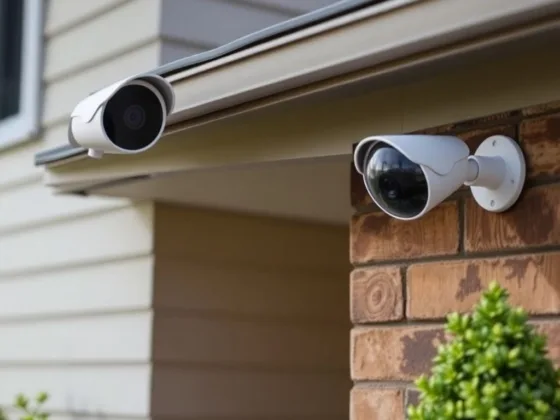Table of Contents Show
Have you ever walked around your house and noticed that some spots feel hotter or colder than others? For example, it could be cold in the kitchen or hot in the bedroom. You’ll be at ease to learn that your AC might hand in the conspicuously hot and cold spots around your house.

Suppose you’re having difficulty figuring out its cause and how to fix it; it’s time to contact an air conditioning duct cleaning company. It’s better to have a technician solve your problem to ensure that the source of the situation gets fully sorted out.
This article will guide you on how to fix the host and cold spots around the house. See how much of the work you can do without involving an expert.
How to Fix Hot and Cold Spots in Your House
Fixing hot and cold spots should never be a problem when you understand how to handle such issues. However, you should worry no more if you don’t know how to fix hot and cold spots. We’ve curated the following tips and ideas to help you solve the problem of hot and cold spots.
Schedule Regular HVAC Maintenance
Regular HVAC maintenance is easy to ensure an even temperature in your home. Most HVAC problems are avoidable if you can keep up with an HVAC maintenance routine. The system requires thorough checks if you are already experiencing hot and cold spots in your house.
Your HVAC may need a new filter since a dirty one can cause airflow problems. Filters require regular cleaning or replacement every 30 days. Consider the number and type of occupants of your house. Conduct a light test to know when to clean or replace a filter.
Another part of maintenance on the HVAC is removing obstacles that might be blocking the vents. For example, objects block off the vent and registers in your HVAC from distributing air like they’re supposed to. It could end up causing problems in the HVAC instead of helping increase energy efficiency.
Read Also:
Upgrade/Replace your HVAC System
Upgrading or replacing your HVAC unit with the latest model might solve your house’s random hot and cold spots.
The latest HVAC models are more energy efficient and ensure even hot and cold air delivery. For instance, a system not older than 15 years is compatible with various control systems with advanced air exchange mechanisms.
Upgrading is also a chance for you to go ductless, reducing inefficiencies involving uneven air distribution. A ductless split system would supplement cooling or heating where it is inadequate.
A replacement is due if your HVAC unit is damaged or is the wrong size for your home. If it’s too large, it over-conditions the air in your space, and you end up with inconsistent temperatures.
Set up a Zoning System
There’s no doubt that the rooms in your house will have different temperatures during the hottest and coldest months. A zoning system can help regulate this problem by allowing you to choose which room needs cooling or heating.
You can divide your home into two zones, for instance, because each zone might have its thermostat. An added advantage of a zoning system is that it is energy efficient and contributes to the longevity of your HVAC system.
Get Rid of Air Leaks Sources in Your House
There are air leaks all over your home. The cracks and gaps in windows, doors, walls, and foundations are most likely to cause temperature variations in your home. Sealing the cracks in these locations is one of the ways of putting an end to hot and cold spots in your house.
Use caulk, weatherstripping, or similarly effective material to seal off the gaps and cracks. Cutting off the draft coming into your house can go a long way in ensuring that you pay reduced utility bills as well. Ensure you involve a construction expert in the exercise if you have to.
Install Energy-Efficient Window Attachments
In case you didn’t realize it, the areas near a window are extra chilly during winter and extra warm during summer.
Usually, there is zero insulation in the area, thus the excessiveness in temperature. Find your most affected window and install an energy-efficient window attachment.
It’s the kind of gadget you truly appreciate on cold winter nights as it controls indoor and outdoor temperature exchange through the windows. It also keeps drafts out.
Seal the Ductwork
The reason you have hot and cold spots could be leaky ducts. Unfortunately, leaky air ducts are a common occurrence.
Old ductwork is likely to tear, leak, and leak cold or hot air into the walls. Also, duct joints tend to break off, causing cold or warm air to escape into unintended zones.
The solution to ending ductwork leaks is duct sealing. It requires mastic sealant or metal tape. An expert knows what to do when sealing leaky ductwork.
Adjust Ceiling Fans Rotation and Speed
Ceiling fans supplement an air conditioner and are applicable all year round. You should consider installing them if you are looking for ways to reduce energy consumption by your HVAC.
The rotation and speed of fan blades can isolate air and cause hot and cold spots in your space. A counterclockwise direction is best for summer since it pushes cool air down. Adjust the rotation in reverse during winter and let the speed be at the lowest setting.
Operating/Setting the Thermostats Properly
Having a programmable thermostat requires you to master its operation. Otherwise, incorrect operations will result in hot and cold spots in your home. Therefore, ensure that you learn how to set it correctly.
Install your thermostat away from heat sources or drafts since they cause ghost readings. It works best when installed on an interior wall. Also, change the batteries on time to promote accuracy.
Final Words
Temperature differences in your house are inevitable as the seasons change. The slight temperature differences, especially in the essential part of your house, can ruin your time at home.
With all the solutions you can use to eliminate hot and cold spots in your house, there is no reason you should live through that annoying experience.









